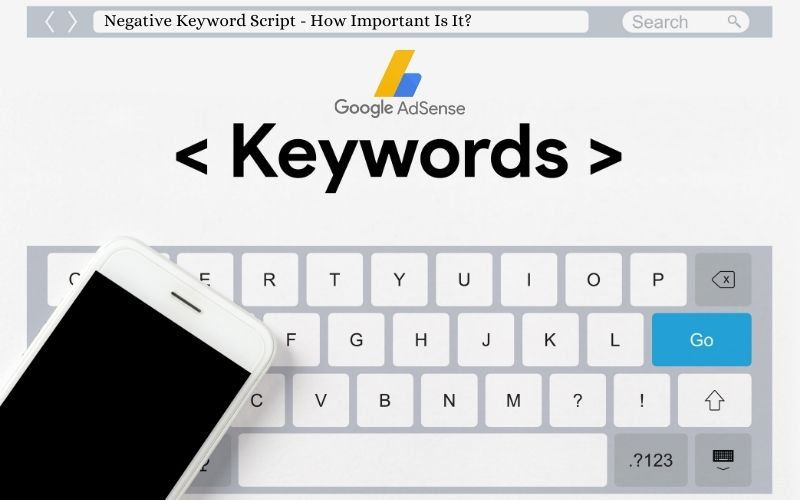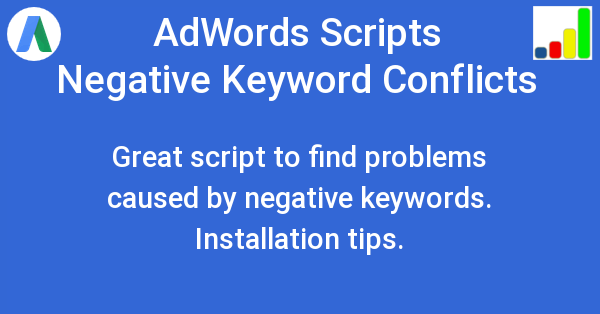
Negative Keyword Script, Google Ads Scripts are a valuable tool for any PPC practitioner. They allow us to automate tasks, saving us time and providing insights into our campaigns that would be difficult to obtain without them. In this post, we will walk through how to write a script that excludes negative keywords from your campaigns. This can be an extremely valuable tool if you want to ensure that your campaign is as tightly focused as possible on the terms you are targeting.
What is a Negative Keyword Script?

Negative keywords are an important part of any pay-per-click campaign, as they help to ensure that your ad is shown to the most relevant audience possible. Negative keyword scripts can be a helpful tool for managing large Negative Keyword Lists. A Negative Keyword Script allows you to add, remove, or change Negative Keywords in bulk, making it a valuable time-saving tool.
Negative keyword scripts can be created and edited in the Google Ads editor and can be imported into other Google Ads accounts. If you’re not familiar with Negative Keyword Scripts, or if you’re looking for more information on how to use them effectively, we would be happy to help you optimize your Negative Keyword List and improve your overall campaign performance.
What is a Negative Keyword Conflict Script?
Negative keywords are a crucial part of any AdWords campaign, as they help to prevent your ads from being shown for irrelevant searches. However, Negative keywords can also conflict with each other, resulting in your ads being excluded from relevant searches. The Negative Keyword conflict Script is a tool that can help you to identify and resolve Negative keyword conflicts.
The script works by comparing the Negative keywords in your account with the search terms that triggered your ads. If the script finds a conflict, it will add the conflicting Negative keyword to a list. You can then review the list and make changes to your Negative keywords as necessary. The Negative Keyword conflict Script can save you time and money by helping you to avoid wasted clicks and ensuring that your ads are seen by relevant searchers.
What Are Google Ads Script Negative keywords?
Google Ads scripts are code written in Google’s proprietary Google Ads Script language. They are used to automate Google Ads tasks, such as creating and managing campaigns, ad groups, and keywords. Google Ads scripts can also be used to generate reports and make changes to campaigns based on data from Google Analytics or other sources.
Negative keywords are a type of keyword that tells Google not to show your ad for a certain search term. For example, if you sell women’s clothing, you might want to add the negative keyword “men” to your campaign so that your ad will not be shown to people who are searching for men’s clothing. You can add negative keywords at the campaign or ad group level.
There are some of the best google ads scripts out there for analyzing the negative keyword script. We’ve made a list of the 20 best google ads scripts for your convenience.
- N-Gram Analysis
- Ads Extension for Google
- Google’s Audience Assistant
- Google’s Sales Countdown
- Pause Ads for Stock Out Products
- Error Checker for Google Ads
- Google’s Broken URL Checker
- Brainlab’s Landing Page Checker
- Brainlab’s Duplicated Ads Checker
- Account’s Health Checker
- Google’s Bid Testing
- Google’s Automatic Placement Exclusion
- QS Tracker
- Google’s Ads Performance Report
- MCC Spend Report
- Google’s Negative Keyword Conflict
- Remove Keywords with Low Volume
- Heatmap Script
- Poor Performing Ads
- Targeting Bulk Radius
Google Ads script negative keywords are a powerful way to control your campaigns and ensure that your ads are only shown to relevant audiences. When used correctly, they can help you improve your click-through rate and lower your cost-per-click.
Last Words
If we recall, negative keywords are an important part of any pay-per-click campaign, as they help to ensure that your ad is shown only when it should be. This allows for more relevant audiences and better conversion rates.
A useful tool in managing large lists (or even creating new ones) can be found within the Google Ads editor – this feature lets you add/change words quickly which saves time during campaign management.
